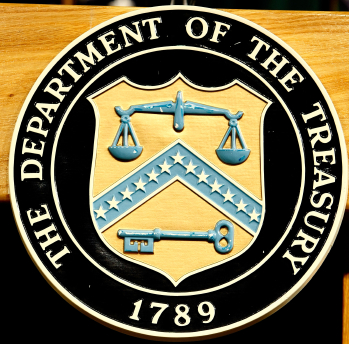
The Department of Treasury recently issued final treasury regulations (T.D. 9655 (2/12/14)) governing the implementation of the shared responsibility provisions for employee health care coverage required under I.R.C. § 4980H, as enacted by the Affordable Care Act. Pursuant to the employer shared responsibility provisions, if employers to whom the rules apply do not offer affordable health coverage that provides a minimum level of coverage to their full-time employees and their dependents, the employer may be subject to an employer shared responsibility payment if at least one of its full-time employees receives a premium tax credit for purchasing individual coverage on one of the new Affordable Insurance Exchanges (e.g., Health Insurance Marketplace).
The employer shared responsibility provisions apply to employers that have 50 or more full-time employees. According to a Treasury Department fact sheet, approximately 96 percent of employers are small businesses that have fewer than 50 workers and thus are exempt from the employer shared responsibility provisions. The final treasury regulations provide that to avoid having to pay a penalty for failing to offer health coverage, employers subject to the rules need to offer coverage to 70 percent of their full-time employees in 2015 and 95 percent in 2016 and beyond.
For businesses with 50 or more full-time employees but less than 100 of such employees, compliance with the final treasury regulations was postponed by one year. Under the final regulations, the employer responsibility provision will generally apply to larger firms with 100 or more full-time employees starting in 2015, and to employers with 50 or more but fewer than 100 full-time employees starting in 2016.
Final Treasury Regulations Clarify the Definition of Full-time Employees
The final treasury regulations set forth clarifications of whether employees of certain types, or in certain occupations and professions, are considered full-time, including:
• Volunteers: Hours contributed by bona fide volunteers for a government or tax-exempt entity, such as volunteer firefighters and emergency responders, will not cause them to be considered full-time employees;
• Educational Employees: Teachers and other educational employees will not be treated as part-time for the year simply because their school is closed or operating on a limited schedule during the summer;
• Seasonal Employees: Those in positions for which the customary annual employment is six months or less generally will not be considered full-time employees;
• Student Work-Study Programs: Service performed by students under federal or state-sponsored work-study programs will not be counted in determining whether they are full-time employees; and
• Adjunct Faculty: As a general rule, the final treasury regulations set forth that employers of adjunct faculty are to use a method of crediting hours of service for those employees that is reasonable in the circumstances and consistent with the employer responsibility provisions. However, to accommodate the need for a “bright line” approach suggested by practitioners, the final treasury regulations expressly allow crediting an adjunct faculty member with 2.25 hours of service per week for each hour of teaching or classroom time as a reasonable method.
Optional Look-Back Measurement for Determining if an Employee is Full-Time
Similar to the proposed treasury regulations, the final treasury regulations allow employers to use an optional look-back measurement method to make it easier to determine whether employees with varying hours and seasonal employees are full-time. Under this measurement, employers may determine the status of an employee as a full-time employee during a subsequent period (e.g., referred to as the stability period), based on the hours of service of the employee in a prior period (e.g., referred to as the measurement period). Furthermore, as with the proposed treasury regulations, the final treasury regulations provide a method under which special unpaid leave and employment break periods during a measurement period are not treated as a period during which zero hours of service are credited when applying the look-back measurement method.
Affordability Safe Harbors
Similar to the proposed treasury regulations, the final treasury regulations provide safe harbors that make it easy for employers to determine whether the coverage they offer is affordable to employees. These safe harbors permit employers to use the wages they pay, their employees’ hourly rates, or the federal poverty level in determining whether employer coverage is affordable under the ACA.
Transition Rules Extended to 2015
Limited transition rules that applied to 2014 under the proposed treasury regulations have been extended under the final treasury regulations to 2015, including:
• Employers first subject to shared responsibility provision: Employers can determine whether they had at least 100 full-time or full-time equivalent employees in the previous year by reference to a period of at least six consecutive months, instead of a full year. This will help facilitate compliance for employers that are subject to the employer shared responsibility provision for the first time;
• Non-calendar-year plans: Employers with plan years that do not start on January 1 will be able to begin compliance with employer responsibility at the start of their plan years in 2015 rather than on January 1, 2015, and the conditions for this relief are expanded to include more plan sponsors;
• Dependent coverage: The policy that employers offer coverage to their full-time employees’ dependents will not apply in 2015 to employers that are taking steps to arrange for such coverage to begin in 2016; and
• On a one-time basis, in 2014 preparing for 2015, plans may use a measurement period of six months even with respect to a stability period the time during which an employee with variable hours must be offered coverage of up to 12 months.
The Service noted that as these limited transition rules take effect, it will consider whether it is necessary to further extend any of them beyond 2015.
In accordance with Circular 230 Disclosure


















Recent Comments